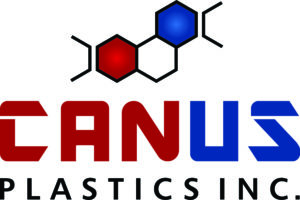Vacuum Forming vs. Thermoforming: Choosing the Best Plastic Forming Process for Your Project

We are dedicated to helping our clients achieve high-quality plastic products for various applications and industries, leveraging our expertise in CNC machining, vacuum forming, thermoforming, general machining, polishing, welding, adhesives, and assembly. One of the most crucial aspects of plastic manufacturing is understanding the different forming processes available and selecting the most suitable method for your project’s specific requirements. In this article, we will compare two popular plastic forming techniques – vacuum forming and thermoforming – shedding light on their unique characteristics, advantages, and suitable applications to help you make well-informed decisions.
Both vacuum forming and thermoforming techniques involve heating a plastic sheet to a pliable temperature and shaping it over a custom mould or tool. However, subtle differences exist between the two processes that impact variables such as cost, production lead times, material utilization, and design flexibility. By exploring these forming techniques and examining their strengths and limitations, we aim to empower you with the knowledge necessary to make strategic choices that result in high-quality, cost-effective plastic products.
Join us as we delve into the world of vacuum forming and thermoforming, discussing critical factors such as the materials used, techniques employed, and the industries they serve. Whether you’re working on a project involving safety and security products, marketing displays, COVID-19 countermeasures, podiums, election boxes, windshields, tables, or benches, understanding these plastic forming techniques can offer invaluable insight to align your project outcomes with your expectations.
Understanding Vacuum Forming
Vacuum forming is a versatile, cost-effective plastic moulding technique often used for producing large, shallow parts or items with intricate detailing. It entails heating a plastic sheet to a pliable temperature and placing it over a mould. A vacuum is then applied to remove the air between the plastic and the mould, causing the material to conform to the mould’s shape. Once cooled, the plastic retains its newly formed shape and can be removed from the mould. Some key advantages of vacuum forming include:
- Lower Tooling Costs: The moulds used in vacuum forming are generally less expensive due to their simplistic design, which means lower upfront costs for your project.
- Shorter Lead Times: Vacuum forming typically has shorter production lead times compared to other moulding methods, making it an excellent choice for fast turnaround times.
- Material Versatility: Vacuum forming accommodates a diverse range of plastic materials with varying thicknesses, including ABS, polystyrene, PETG, and acrylic.
- Design Flexibility: Vacuum forming enables the final product to incorporate complex shapes, multiple textures, and intricate details.
Delving into Thermoforming
In thermoforming, a plastic sheet is heated to its pliable temperature and placed over a mould. The main difference between vacuum forming and thermoforming lies in how the plastic is forced into the mould’s shape. Thermoforming involves using pressure, such as air pressure or mechanical force, to push the softened plastic sheet against the mould. This process results in stronger parts that can withstand higher stress levels and is ideal for heavy-duty applications. Key benefits of thermoforming include:
- Increased Structural Integrity: When producing large, heavy-duty parts or components subjected to weight and stress, thermoforming offers increased structural strength and impact resistance.
- Enhanced Wall Thickness Control: Thermoforming permits improved control over material thickness distribution throughout the part, ensuring consistent wall thickness and optimal performance.
- Material Efficiency: Thermoforming often results in less material waste during production, which is an environmentally friendly and cost-saving advantage.
- Adaptability: Thermoforming is adaptable to various plastic materials and can efficiently produce complex components with various textures and finishes.
Comparing Vacuum Forming and Thermoforming Applications
Vacuum forming and thermoforming serve multiple industries with specific requirements, making them suitable for various applications:
- Vacuum Forming Applications: Vacuum forming is widely used in the production of clamshell packaging, display cases, product trays, and point-of-purchase displays. Additionally, this process is ideal for creating components for the automotive, aerospace, and medical sectors, such as interior panels, covers, and housings.
- Thermoforming Applications: Thermoforming is popular in heavy-duty product manufacturing, including components for agricultural machinery, large equipment enclosures, and transportation shelters. This method is also employed in the production of protective covers, pallets, and large packaging items.
Factors to Consider When Choosing Between Vacuum Forming and Thermoforming
When selecting which plastic moulding process to use for your project, it’s essential to weigh several factors to ensure optimal results:
- Production Volume: While vacuum forming is suitable for low to medium production volumes, thermoforming is better suited for high-volume projects due to its efficiency and material savings.
- Part Complexity: Vacuum forming accommodates intricate details and design features, whereas thermoforming focuses more on providing increased structural strength.
- Material Properties: Though both processes work with various plastic materials, they have unique requirements that must be considered. For instance, if a project requires a deep draw and high resistance to stress, thermoforming is the better option.
- Budget Constraints: Vacuum forming typically has lower tooling costs and shorter lead times, making it the more cost-effective choice for projects with budget limitations.
Choosing the Best Moulding Technique for Your Project
When deciding on the most suitable moulding technique for your project, take the time to assess your project’s unique requirements. Considering factors like production volume, part complexity, material properties, and budget constraints is crucial. Partnering with an experienced plastic manufacturer who can provide expert advice and guidance is invaluable to ensure your project’s success.
Trust the Experts in Vacuum Forming and Thermoforming for Your Projects
By understanding the differences between vacuum forming and thermoforming processes, along with their unique benefits and applications, you can make well-informed decisions that result in the highest quality plastic products. Canus Plastics Inc.’s team is dedicated to providing expert advice and services to help you select the best moulding process for your project. Reach out to our team today to discuss your project requirements and discover how our expertise in vacuum forming and thermoforming can turn your vision into reality.

